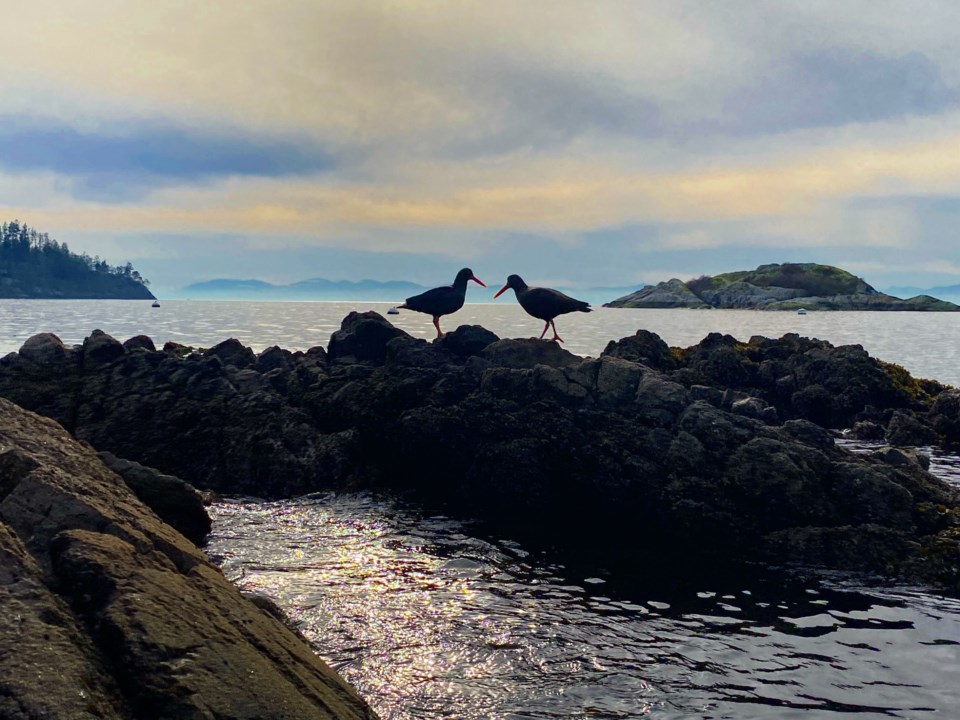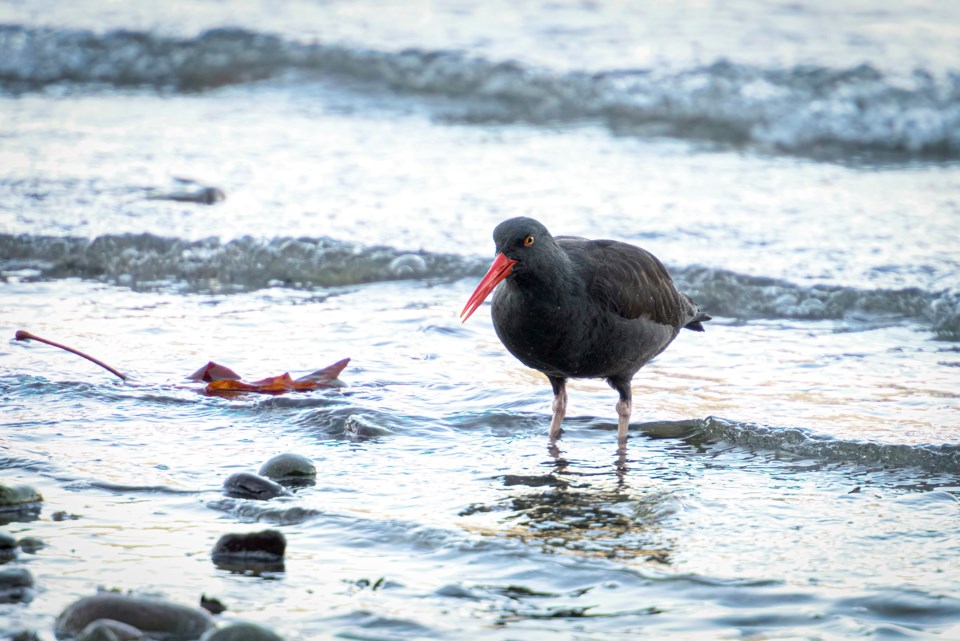Many locals are familiar with tiny rocky Onion Island, directly off Sealeigh Park Beach and adjacent to Tunstall Bay. It’s a popular destination and resting spot for swimmers, boaters, and paddle boarders, who love exploring its tide pools, eating a rustic picnic, and even foraging for wild onions. However, it might be time to reconsider our habits around this lovely islet… at least when the local lovebirds are active!
Easily spotted in the intertidal areas, pairs of distinctive Black Oystercatchers with bright orange bills mate and raise their young on these rocks from May to mid-August. However, it is quite easy to overlook their tiny nests, barely more than scrapes in the beach.
Monogamous pairs of Black Oystercatchers will often collect little shell fragments or small stones to outline their shallow one inch nests, within which they lay 2-3 spotted eggs. A month later, little hatchlings emerge and are taught to forage the rocky shores for (you guessed it!) oysters, and other tasty bivalves like clams. Sometimes, a second brood is attempted, if the first fails.
Smaller than a footprint, these nests are very easy to miss, and once disturbed, will be abandoned by the parents, even if the eggs are left intact. Great news for predators like eagles and otters… not so great for the next generation of Black Oystercatchers.
Black Oystercatchers are found throughout the Salish Sea, however, there are a very limited number of specific types of locations where they breed. Almost all the nests are on tiny uninhabited rocky islands. Nesting locations near Bowen Island include Pam Rocks, the Pasley Islands, and of course, our little Onion Island.

Most nesting areas are protected by conservation groups and have restricted access, but Onion Island has been left pretty much to its own devices, until recently, when Bowen Island was named a UNESCO Biosphere Region, due in part to the Oystercatcher breeding grounds, which is listed as an Important Bird Area (IBA).
Unfortunately, recognition on paper hasn’t necessarily translated into awareness or protection on the ground. Few people realize the large and disastrous impact that a little recreational stopover on Onion Island could have for these nesting birds.
Over the last ten years, recreational use of the island has increased, and the Black Oystercatchers who nest there have been struggling valiantly to produce chicks. Success rate has been very low. When compounded with climate change, circumstances are not in their favour.
It would be terrible to lose our brightly billed local friends, for the sake of a quick recreational romp. Black Oystercatchers already no longer nest in the Southern Gulf islands, due to human activity and development. Let’s make an effort to protect those who can’t protect themselves.
A small groundswell of activism has begun, with local residents coordinating with the Muni, the Conservancy, and Birds Canada to raise awareness about our local treasure.
Watch for signage which will soon be appearing on the beaches near Onion Island, explaining about Black Oystercatchers nesting seasons, and requesting that people give the birds some space during their romantic interludes… Sometimes all a bird wants is a little privacy to slurp their oysters and get in the mood

-2.jpg;w=120;h=80;mode=crop)
-2.jpg;w=120;h=80;mode=crop)